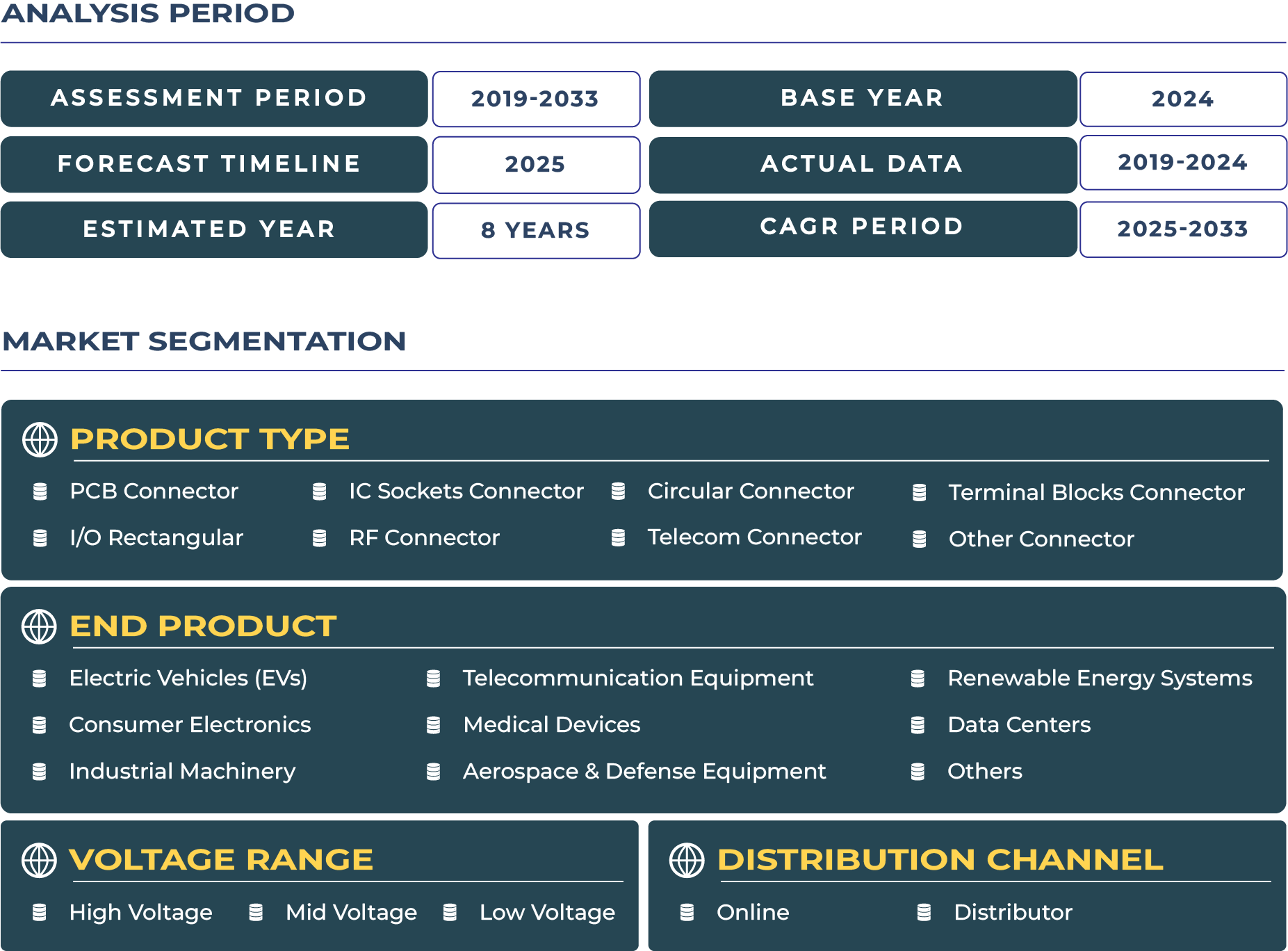Argentina Connector Market Outlook
Edge-AI Ready Solutions Powering Smart Factory Efficiency
Argentina is fast becoming a strategic hub for smart manufacturing and edge-AI applications. With the nation expanding its industrial automation infrastructure, particularly in food processing, automotive, and electronics assembly, demand surges for precision-engineered connectors capable of supporting edge-AI workloads in real time. Cost-sensitive operations require connectors that deliver long-life performance with minimal maintenance—making SMT-compatible, lifecycle-optimized devices a pillar of investment. Within the 2025–2033 forecast window, Argentina connector market is projected to be valued at USD 780 million by 2033, reflecting both edge-AI readiness and cost discipline.
Smart Factory Surge Meets Cost‑Conscious Edge‑AI Connector Deployment
Argentina’s transition toward smart factories is underpinned by increasing automation of medium-scale industrial zones in Córdoba and Rosario. Manufacturers in these hubs are integrating robotics, ISR (intelligent sensing and response) systems, and IIoT devices—all demanding compact, rugged connectors. SMT-compatible and edge‑AI capable connectors have emerged as differentiation drivers, allowing deployment of on‑premise AI processing nodes without expensive rewiring or maintenance shutdowns. With Argentina’s labor hourly cost nearly 20% below Western counterparts, manufacturers favor connectors that prolong system uptime and contain long‑term operating costs—underpinning the connector sector’s growth.
Navigating Intellectual Property Constraints and R&D Capex Profiles
Despite strong demand, Argentina’s connector ecosystem faces headwinds from intellectual property (IP) enforcement deficits and high R&D expenditures. Establishing country-specific connector platforms requires significant investment in design, testing, and certification—often with slow payback. IP complexities become constrained when licensing global connector standards or securing patents for edge‑AI design. Still, Argentine firms are pursuing licensing partnerships to gain access to modular connector IP, while also investing in local lab capacity.
Surging Uptake of Edge‑Connector and SMT Technologies
Connector industry trends in Argentina reflect a pivot toward edge‑AI‑ready components. The use of edge connectors—optimized for AI camera modules, IIoT gateways, and factory-floor sensor nodes—has increased by 35% YoY, according to industry experts. Surface-mount connector adoption is rising in tandem as assembly lines embrace automation and high-volume SMT throughput, reducing operator errors and raising production density. These trends signal a move toward precision‑driven, lightweight connectors tailored for Argentina’s industrial edge.
Unlocking High‑Value Opportunities in AI‑Driven Edge Cameras and SMT Integration
The Argentine connector sector offers compelling opportunities in two areas: edge-AI camera systems and pre‑integrated SMT connector kits. Smart camera manufacturers are sourcing rugged, high‑throughput connectors with EMI‑shielded features to operate in damp or dusty environments. Argentine OEMs are supplying these connectors in Argentina’s packaging, transportation, and mining sectors. Moreover, domestic SMT service providers are forming partnerships with international connector vendors to supply ready‑to‑use connector-and-cable modules, reducing OEM lead times.
Regulatory Climate Spurs Compliance‑First Connector Design
Argentina regulatory landscape is evolving with new mandates governing industrial-grade connectors—requiring IP67‑rated seals, RoHS‑compliance, and local certification under Resolution 169/18 and updated via Resolution 2073/207 or similar frameworks. In June 2024, the Ministry of Industry released new guidance mandating connector sealing and traceability in public infrastructure tenders. The Argentine Standards Institute (IRAM) also began offering testing protocols aligned with IEC 61984. Manufacturers integrating these standards are gaining quicker qualification in state‑driven projects.
Energy and Import Pressures Shaping Total Cost of Ownership
Argentina’s industrial energy costs remain approximately 12% above the South American average—making efficiency a top priority. Connector manufacturers are responding by promoting lifecycle and thermal‑optimized devices. Additionally, with imported connector tariffs nearly 8%, local production capacity has risen by 22%, partly due to subsidy programs initiated in late 2024. These economic constraints are channeling the connector ecosystem toward lifecycle‑centric and import‑substitution strategies.
Local-International Synergy Through Lifecycle Costing
Argentina’s connector market comprises both domestic firms such as Famatina Components and international players including TE Connectivity, Amphenol, and Molex. International firms have also intensified partnerships with local assembly plants, enabling regional expansion and intellectual property transfers. These strategic moves underscore a hybrid approach combining cost efficiency, local manufacturing strength, and global tech integration in Argentina’s connector landscape.







